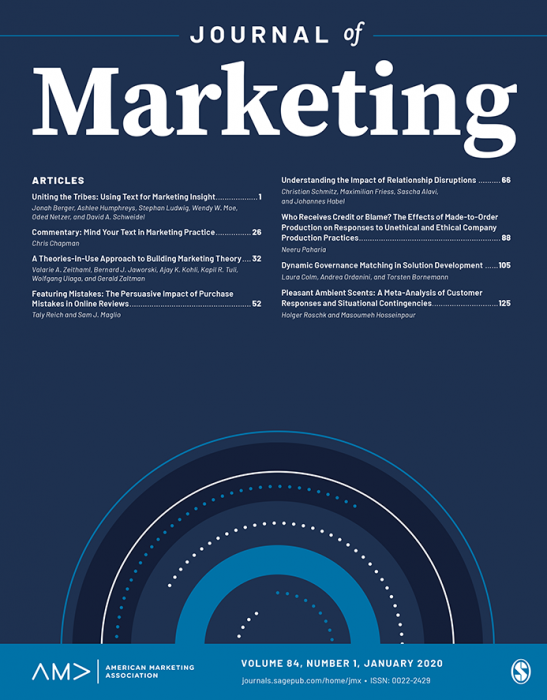EXPRESS:可持续的产品利润潜力和可用性
IF 10.4
1区 管理学
Q1 BUSINESS
引用次数: 0
摘要
消费者对购买采用更可持续的做法生产的产品越来越感兴趣,最近在美国,包装消费品(cpg)的增长大部分来自包装上明确标有可持续性声明的产品。然而,许多类别的可持续产品市场份额水平很低,地域差异很大。在控制了可持续产品的相对“利润潜力”(由数量、价格和价格弹性决定)之后,我们评估了人口变量对可持续产品可用性的作用。为了估计利润潜力,我们估计了食品杂货和大众商家业态中七个CPG子类别的产品和国家特定需求弹性。对这些估计的荟萃分析表明,可持续产品的相对利润潜力随着收入和民主党选票份额的增加而增加。这些变量预示着更大的可持续产品供应,而不是更高的利润潜力。该县白人的比例对利润潜力没有显著影响,但会导致更高的可持续产品可用性。我们的研究结果提供了证据,表明管理者可能会使用简单的人口统计启发式来做出产品库存决策(得到了对零售商的单独调查的支持),而这些决策不一定反映出对可持续产品及其盈利能力的偏好。本文章由计算机程序翻译,如有差异,请以英文原文为准。
EXPRESS: Sustainable Product Profit Potential and Availability
Consumers have become more interested in purchasing products produced using more sustainable practices, with much of the recent growth in consumer-packaged goods (CPGs) within the United States from products with clearly labeled sustainability claims on their packaging. However, many categories have low levels of sustainable product market share, with substantial geographic variation. We assess the role of demographic variables on the availability of sustainable products, after controlling for their relative “profit potential” (determined by quantity, price, and price elasticity). To estimate profit potential, we estimate product and county-specific demand elasticities for seven CPG subcategories in the grocery and mass merchandiser formats. A meta-analysis of the estimates show that the relative profit potential of sustainable products increases with income and Democratic vote share. These variables predict greater sustainable product availability than would be expected from their higher profit potential. The fraction of the county that is white does not significantly impact profit potential but leads to higher sustainable product availability. Our findings provide evidence that managers likely use simple demographic heuristics to make product stocking decisions (supported by a separate survey of retailers) that do not necessarily reflect preferences for sustainable products and their profitability.
求助全文
通过发布文献求助,成功后即可免费获取论文全文。
去求助
来源期刊

Journal of Marketing
BUSINESS-
CiteScore
24.10
自引率
5.40%
发文量
49
期刊介绍:
Founded in 1936,the Journal of Marketing (JM) serves as a premier outlet for substantive research in marketing. JM is dedicated to developing and disseminating knowledge about real-world marketing questions, catering to scholars, educators, managers, policy makers, consumers, and other global societal stakeholders. Over the years,JM has played a crucial role in shaping the content and boundaries of the marketing discipline.
 求助内容:
求助内容: 应助结果提醒方式:
应助结果提醒方式:


